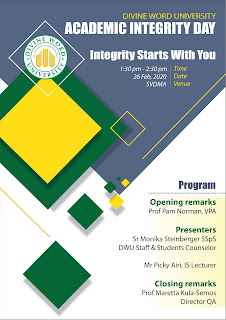Written in November 2, 2020. Updated: 30th May 2024
What does it mean to be a digital teacher? There is no concrete definition to this term however various articles and websites do try to define this term around the idea of a teacher being able to deliver a course or teach using various digital tools, engaging and interactive content to enhance learning. This definition relates to the terms online learning, blended learning and flipped classroom as opposed to the traditional way of learning.
How efficient and effective one does this depends I believe on the level of expertise and experience. I am no expert at this stage and I don't claim to be. I'm
a strong believer that technology itself is not a magic bullet, it is
how we use it. Learning at the end of the day must be the focal point
and not technology. It is only a tool. A hammer is only useful in the
hands of a carpenter or builder, it cannot hit a nail on its own.
This series started in the wake of the pandemic to offer some guidance to those looking at adopting and integrating technology. If you're only just beginning or are already some years into teaching with technology I recommend you take a look at the FCIT's Technology Integration Matrix (TIM) framework. The TIM provides a framework for
describing and targeting the use of technology to enhance learning. It incorporates five interdependent characteristics of meaningful
learning environments: active, collaborative, constructive, authentic,
and goal-directed. These characteristics are associated with five levels
of technology integration: entry, adoption, adaptation, infusion, and
transformation.[Update: Developed by the Florida Center for Instructional Technology (FCIT) in 2005, the TIM is now in its third edition (2019)]
In Part 1 of the series I list some of the tools I have learnt to use over the last six (and now into the
seventh year) of teaching at DWU and share briefly what I use them for. In the next series of articles I will then share
what I do with each or combination of these tools or how I use them. I wish to say here that I am by no means yet an expert in all these tools (I have mastered some and still learning others) however I would like to share briefly how I use them or what I do with them.
Most of these are
software I use in delivering blended mode units/courses over Moodle LMS
or Canvas LMS. Some are proprietary while others free to use open source software.
📌 Sparkol VideoScribe - is a whiteboard animation/story-telling software. Its an amazing piece of software. It was one of the first tools I used to create the hand-drawn animations.
📌 Articulate - is a course authoring tool. A proprietary platform for full online course creation. I have only used this tool with a free trial account to create some demo courses.
📌 ActivePresenter - similar to Camtasia, this tool is great to do screencasts, record video demos etc. It is now a course authoring tool also.
📌 iSpringSuite - an authoring tool, great for interactive content.
📌 Adobe Captivate - another amazing authoring tool. Was lucky enough to get the eight version. Creating interactive content or choose from beautiful design options, ready-to-go slides and assets to
quickly create courses.
📌 MailChimp - an email marketing tool which I use for academic purposes back in 2017-2018. I would usually send weekly updates for my online Graduate Certificate in Data Networking course using the free monthly plan on this platform. I no longer use it.
📌 Camtasia - Camtasia is a software suite for creating and recording video tutorials and presentations
via screencast, or via a direct recording plug-in to Microsoft
PowerPoint. Other multimedia recordings may be recorded at the same time
or added separately. Its similar to ActivePresenter and can also be used for authoring content.
📌 Open Broadcast Studio (OBS) - I try to use at least two camera views and the desktop, OBS comes in very handy. More recently since I moved across to CLT. I have used OBS in all the livestream and lecture capture events. A free open source lightweight yet powerful software video encoders. A trusted piece of software.
📌 Audacity - free alternative to Adobe Audition for doing podcasts but I use it to record audio for VideoScribe.
📌 Zoom - I use this for meetings, short trainings and webinars. The more recent updates now have clips, notes and whiteboard.
📌 Cisco Packet Tracer - simulation tool purposely for teaching/learning data networking. I use this for most of my teaching demonstrations.
📌 GNS3 - Graphical Network Simulator. More of an emulation tool purposely for teaching/learning data networking. A steep learning curve though and can be very resource intensive.
📌
Facebook Social Learning groups. - so far I find this very helpful as
FB has become more like a universal, easily accessible, lite platform
not just for socializing but for learning also...social learning!!
📌 Canva - for all my graphics, marketing, banner needs etc etc... Canva is there to save me.
Forgot to add two recent tools I've started using, Shotcut... a tool
I use for video timelapse, and VSDC Free Video Editor...for video
editing of course.
Stay tuned for more...
Picture credit:
spark.adobe.com

 Was nervous but excited when invited to give a talk as one of the two presenters during the DWU Integrity Week (Feb 24-28, 2020) in the Madang campus. I was invited to talk about online integrity.
Was nervous but excited when invited to give a talk as one of the two presenters during the DWU Integrity Week (Feb 24-28, 2020) in the Madang campus. I was invited to talk about online integrity. 

